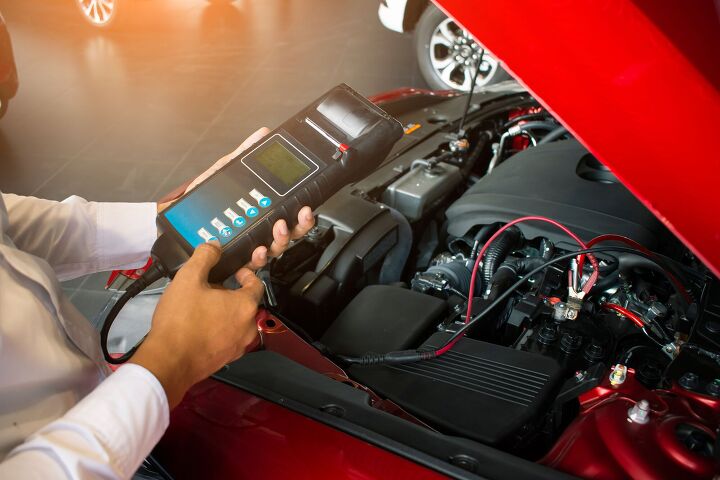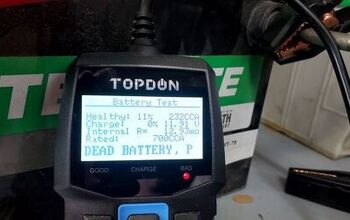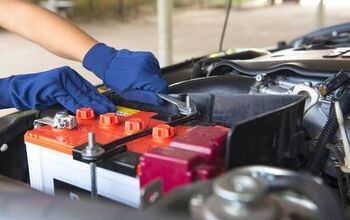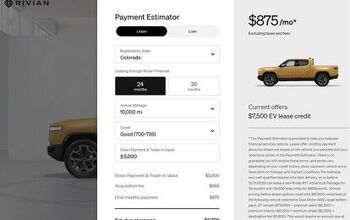How to Test a Car Battery

A car battery is a crucial component that plays a vital role in the operation of a vehicle. Its primary function is to provide electrical energy to start the engine and power various electrical systems when the engine is not running. Testing a car battery is a straightforward process that can help you determine its health, which can prevent unfortunate situations while keeping the vehicle in its best condition. In this article, we will explain the steps for testing a car battery, as well as what the battery does and why a healthy battery is important for your vehicle.
Here are the basic steps to testing a car battery:
Safety First: Make sure the car is turned off, and wear safety glasses and gloves to protect yourself from any acid or electrical issues.
Visual Inspection: Check the battery for any visible signs of damage, corrosion, or leaks. If you notice any issues, address them before proceeding.
Voltage Test: Use a multimeter to measure the voltage of the battery. Set the multimeter to DC voltage. Connect the positive (red) probe to the positive terminal of the battery and the negative (black) probe to the negative terminal. There are many types of multimeters that can be used for this, with the two most common being analog and digital. An analog unit will display a readout that may need some interpreting, while a digital traditionally gives you a number that’s easy to understand. Both are available through online retailers and in-store shopping facilities alike.
Note that a fully charged battery should read around 12.6 volts. If it's below 12.4 volts or so, it may need to be charged. For reference, it should hold roughly 13.5 to 14.5 volts when the vehicle is running.
Load Test: If the voltage is low, perform a load test to check the battery under load. For this, you need to use a battery load tester. Connect the positive and negative leads to the corresponding battery terminals. Apply the load as specified by the tester for 15 seconds, or as specified by the load tester manufacturer. A good battery should maintain voltage above a specified level during the test.
Specific Gravity Test (for lead-acid batteries): If you have a lead-acid battery with removable caps, you can check the specific gravity of the electrolyte using a hydrometer. Compare the readings with the battery's specifications.
Cold Cranking Amps (CCA) Test: Some multimeters or specialized testers can measure the CCA of the battery. Check the battery's CCA rating and compare it with the test result.
Professional Testing: If you're unsure or the battery fails any of the tests, consider taking it to a professional for a comprehensive battery test.
Remember to consult your vehicle's manual for specific instructions and safety precautions. If the battery is old or consistently fails tests, it may be time for a replacement.
It's important to note that while the battery is critical for starting the engine and powering electrical systems when the engine is off, the alternator takes over the role of supplying electrical power when the engine is running. Regular maintenance, such as checking the battery's voltage and ensuring proper connections, is essential to ensure reliable performance.
Promoted Product: TOPDON TB6000Pro Smart Charger & Tester
About the TOPDON TB6000Pro Smart Charger & Tester
You no longer need to own both a battery tester and a battery charger - the TOPDON TB6000Pro does both!
The TB6000Pro is able to test your battery before charging, which gives you an inside look at your battery’s health. It also boasts a 9-step smart charging feature (diagnosis, desulphation, pre-charge, soft start, bulk charge, absorption, analysis, recondition, maintenance) which eliminates the worry of potentially over charging. It also provides both a pre- and post-charging report so you can see how much the battery has been improved.
With the TB6000Pro, you can monitor the status of your charging using an app on your phone. Through this app, you have access to advanced settings like voltage and current adjustment.
The TB6000Pro does more than charge your battery…it also repairs it. It utilizes pulse-width modulation to help break down the sulfates in your battery, which means improved battery resistance and longer service life.
Compatible with 6V and 12V lead-acid batteries and 12V lithium batteries, the TB6000Pro can keep virtually any vehicle battery charged and ready to go.
Main Functions of a Car Battery
Starting the Engine: The primary function of a car battery is to provide the initial electrical power needed to start the engine. When you turn the key in the ignition, the battery supplies the necessary voltage to crank the engine and initiate the combustion process.
Powering Electrical Systems: While the engine is running, the alternator takes over the task of supplying electrical power to the vehicle's systems. However, when the engine is off or the alternator cannot provide sufficient power, the battery takes over to supply electricity to essential components such as lights, radio, air conditioning, and other accessories.
Voltage Stabilization: The battery helps stabilize the electrical voltage in the vehicle's electrical system. It acts as a buffer, absorbing and smoothing out voltage fluctuations that may occur when the alternator output varies.
Providing Power in Emergencies: In situations where the alternator fails or the engine is not running, the battery can still provide electrical power for a limited time. This can be crucial in emergencies, allowing you to operate hazard lights or make a brief call on your mobile phone.
Supporting the Ignition System: The battery powers the ignition system, which includes the spark plugs. This is essential for the combustion process in the engine.
When a car battery fails, it can lead to various issues and impact the overall operation of the vehicle. Here are some common consequences of a failed car battery:
Engine Won't Start: The most immediate and noticeable effect of a failed battery is that the engine won't start. The battery provides the initial electrical power needed to crank the engine, and if it's dead or not functioning properly, the vehicle won't start.
Dim or Non-Functional Lights: A weak or dead battery can result in dim or non-functional headlights, interior lights, and other electrical components. This is because the battery is not providing sufficient power to these systems.
Clicking Sounds: When attempting to start the engine, a failing battery may cause clicking sounds. This indicates that there's not enough power to engage the starter motor.
Electrical System Malfunctions: A failing battery can lead to erratic behavior in the vehicle's electrical systems. This may include issues with power windows, door locks, radio, and other accessories.
Stalling or Poor Performance: In some cases, a weak battery may lead to stalling or poor engine performance. The battery plays a role in supporting the ignition system, and if it fails, it can affect the combustion process.
Warning Lights on the Dashboard: Modern vehicles are equipped with various sensors that monitor the health of different components. A failing battery can trigger warning lights on the dashboard, indicating a problem with the electrical system.
Loss of Memory in Electronic Systems: Some vehicles have electronic systems that store information such as radio presets, seat positions, and climate control settings. A dead or disconnected battery may result in the loss of these settings.
Inability to Jump Start: If the battery is completely dead, attempting to jump-start the vehicle may not be effective. Jump-starting is typically successful when the battery has some charge left but may not work if the battery is completely depleted or damaged.
It's important to address a failed car battery promptly. Recharging or replacing the battery, depending on its condition, is necessary to restore the vehicle's functionality. Regular battery maintenance and periodic checks can help prevent unexpected failures.

Ross hosts The Off the Road Again Podcast. He has been in the off-road world since he was a kid riding in the back of his dad’s YJ Wrangler. He works in marketing by day and in his free time contributes to Hooniverse, AutoGuide, and ATV.com, and in the past has contributed to UTV Driver, ATV Rider, and Everyday Driver. Ross drives a 2018 Lexus GX460 that is an ongoing build project featured on multiple websites and the podcast.
More by Ross Ballot




































Comments
Join the conversation